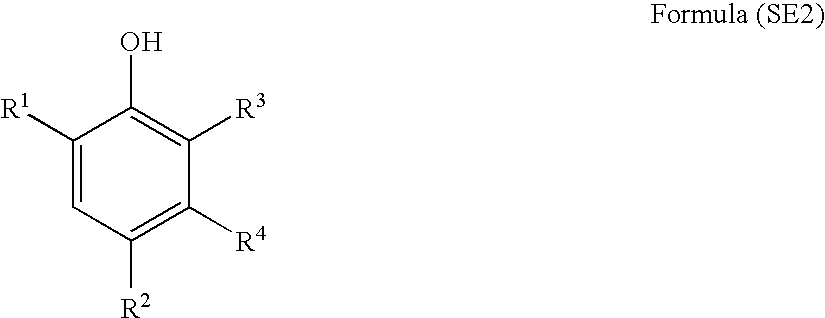Micro-particle dispersion having hydrophobic protective colloid and method of manufacture thereof, photosensitive emulsion and method of manufacturing thereof, and silver salt photohermographic dry imaging material utilizing the same
a technology of hydrophobic protective colloid and microparticles, which is applied in the field of microparticle dispersion, can solve the problems of significant limitation, grain aggregation or unnecessary grain growth, and the production of solvent-based dispersions is quite difficult, and achieves high covering power (cp), high maximum density, and low fog
- Summary
- Abstract
- Description
- Claims
- Application Information
AI Technical Summary
Benefits of technology
Problems solved by technology
Method used
Image
Examples
example 1
[0345] A 4-necked separable flask of 0.3 liter equipped with a titration device, a thermometer, a nitrogen gas introducing tube, a stirrer and a reflux condenser was charged with 20 g of methyl ethyl ketone, and was heated to a temperature described in Table 1. Further, monomer having the composition described in Table 1 was weighed, subsequently, a mixed solution, in which 2 g of N,N-azobisisovaleronitrile was added into the aforesaid monomer, was titrated over 2 hours into the flask, and the solution was reacted for 5 hours. Thereafter, 80 g of methyl ethyl ketone were added to the solution to be cooled, resulting in preparation of polymer solutions A, B and C having a polymer content of 50 weight %. The molecular weight was determined as a polystyrene conversion weight average molecular weight by means of GPC.
TABLE 1Polymer APolymer BPolymer CMonomergggcomponentDAAM10 10 10 Aam221PSE-400444PME-400445Charging70° C.50° C.70° C.temperatureMolecular80,000-90,00050,000-60,00080,000-...
example 2
[0392] A 4-necked separable flask of 0.5 liter equipped with a titration device, a thermometer, a nitrogen gas introducing tube, a stirrer and a reflux condenser was charged with 50 g of methyl ethyl ketone, the composition ratio described in Table 1(2) of monomers (g) other than NIPAM having and 0.12 g of lauryl peroxide and was heated at a temperature described in Table 1 (2). Further, a solution, in which NIPAM monomer (g) described in Table 1(2) was dissolved in 43 g of methyl ethyl ketone, was titrated over 2 hours into the flask. Thereafter, after the solution was heated over 1 hour to be a reflux state, absolution, in which 0.17 g of lauryl peroxide were dissolved in 33 g of methyl ethyl ketone, was titrated over 2 hours, followed by being reacted at the same temperature for 3 hours. Subsequently, a solution in which 0.33 g of methyl hydroquinone were dissolved in 107 g of methyl ethyl ketone was added and the solution was cooled, resulting in preparation of polymer solutions...
PUM
| Property | Measurement | Unit |
|---|---|---|
| grain diameter distribution | aaaaa | aaaaa |
| grain diameter distribution | aaaaa | aaaaa |
| temperature | aaaaa | aaaaa |
Abstract
Description
Claims
Application Information
 Login to View More
Login to View More - R&D
- Intellectual Property
- Life Sciences
- Materials
- Tech Scout
- Unparalleled Data Quality
- Higher Quality Content
- 60% Fewer Hallucinations
Browse by: Latest US Patents, China's latest patents, Technical Efficacy Thesaurus, Application Domain, Technology Topic, Popular Technical Reports.
© 2025 PatSnap. All rights reserved.Legal|Privacy policy|Modern Slavery Act Transparency Statement|Sitemap|About US| Contact US: help@patsnap.com



